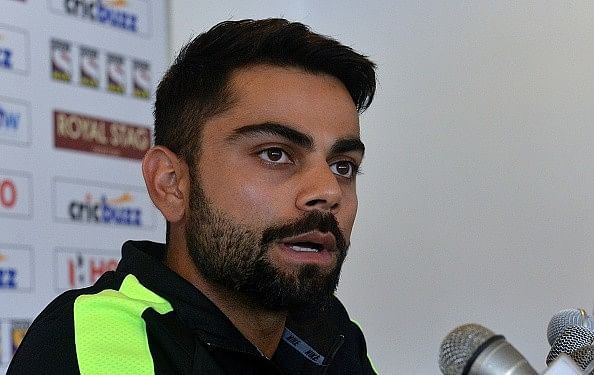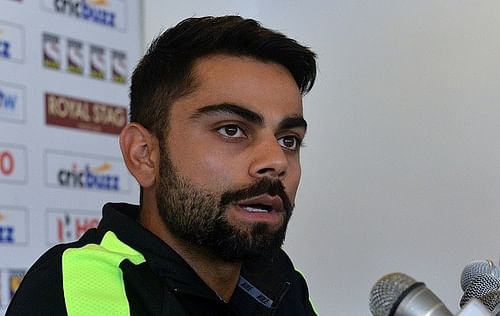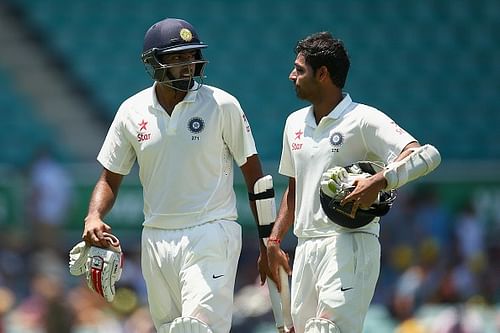
Why India should continue with the 5-bowler strategy in Test cricket

“I certainly believe in giving the team a chance to pick up 20 wickets. I am a big fan of playing five bowlers in a 6-5 combination”
So said Virat Kohli at the start of the one-off Test against Bangladesh, his first as official skipper of the Indian Test cricket team.
It’s a good one, recognising the fact that in a Test match, how much ever runs you score, you can win only when you pick 20 wickets. The 5-bowler strategy is good in the sense that all bowlers, though may not get shorter spells, but fewer number of spells which increases their potency.
However, a 5-bowler strategy for India is also risky at this stage. Coupled with Ashwin’s diminishing batting returns and a long tail, it has become a case of batting done by the time the sixth wicket falls down.
What India need is a fast bowler who can bat and stay in the middle for a long period of time or a batsman who can bowl at least 10 overs of decent and tidy seam-up. The latter preferably. We saw what Jacques Kallis did for the Proteas for a number of years. We can see what Ben Stokes is presently doing for England’s team dynamics.
With due respect, Binny doesn’t fall into a long term category of allrounders. We know he can swing the ball, handsomely at that, but Binny is more a bits and pieces player who will have the odd good days but can be exposed as his painful 1st innings stay against Sri Lanka in the 2nd Test showed. It is dangerous to continue with this approach in the longest format of the game.
3 spinners or 3 fast bowlers?
Against Sri Lanka, India took a laudable move in playing 5 bowlers but the crux and its implementation, at least in the first Test came back to haunt the visitors. They played with three spinners and two fast bowlers. That is another thing about playing five bowlers, I guess.
You don’t need three spinners in a team, at least not in a Test match. Spinners like to get in the groove and bowl long spells to entice the batsmen. With three spinners, each gets lesser number of overs to actually do that and one invariably under bowls which then becomes a total waste. Fast bowlers, on the other hand, cannot bowl effectively for more than, say, 8 overs in a spell. Having three can ease their pressure as they can bowl in shorter and quicker bursts.
The above point is proved by the two Tests so far between India and Sri Lanka. It's true that Harbhajan was out of form and under pressure to perform in the first Test at The Galle, but these numbers do reveal a trend. Out of the 31 wickets that fell to spin, Harbhajan took only 1 wicket and bowled 25 overs for it. Ashwin got a 10-for, Mishra scalped 5 wickets, Kaushal picked 8 and Herath picked 7 wickets to inflict defeat on India.
Even though Ashwin and Mishra were bowling well, Harbhajan had to be given some overs which could have been otherwise bowled by the other two. The next Test match, the plan changed and India bought in Binny and we saw that Harbhajan wasn't missed.
Now Umesh Yadav and Mishra show spunk while batting while Ishant comes from the Rahul Dravid school of defence minus the average. However, it has to be understood that when the tail bats, it’s not the runs but the time they spend in the middle that matters, at least in most cases. The team management can set a cumulative target of 100-120 balls to be faced by the No.9, 10, and 11.
India needs Ashwin and Bhuvneshwar Kumar to become consistent with their batting
I know, easy to say, hard to implement. That’s why India needs Ashwin to bat in a better fashion. His bowling has reached another level but his batting is heading the opposite way and he is not fulfilling his early promise and grace. It is hard to say whether Ashwin gets out to a good ball or he’s making it look good, but his batting numbers certainly need improvement.

There is another player who was for a brief period touted as India’s ‘Mr.Consistent’ among the tailenders, but is currently out of the picture – Bhuvneshwar Kumar. His batting and bowling is just what India need now. Make no mistake, he is a good bowler. He may not have that pace and x-factor, but he was one of the few to come out with his reputation enhanced in the 2014 tour of England. His batting shows guts and his bowling, patience and consistency.
The problem with having Ishant, Yadav and Aaron in the same eleven is that on their days they may flatten the opposition but on other days they will get flattened. Among the aggressive but inconsistent tearaway pacers, India has in its ranks, maybe a medium pace bowler is just what they need.
Binny’s batting has still not reached that consistency. Bhuveshwar Kumar has increased his skills. His bowling has improved tremendously and only if Ashwin and Kumar can fulfill that no.7 batting role, India would become formidable and their execution, better.